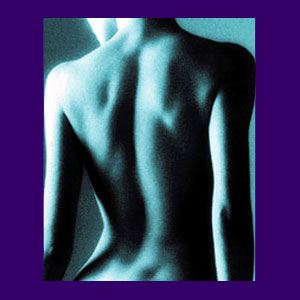
Curvature of the spine is a greatly misunderstood topic, since there are 2 completely different types of curvature possible.
First off, the spine is normally multiply curved from front to back in a definite pattern alternating from lordotic to kyphotic to lordotic to kyphotic curvature in the cervical, thoracic, lumbar and sacrococcygeal regions respectively. While these curves are normal, there is always the possibility that a person might suffer an exaggerated form of either lordosis or kyphosis, called a hyper curvature condition, or a reduction in the normal curvature called a hypo curvature condition.
The next variety of spinal curvature is always deemed to be atypical and sometimes even pathological. This side to side curvature is also commonly known as scoliosis. There are 3 distinct forms of scoliosis. The only form that usually demonstrates a conclusive cause is the adult variation. The true causes of idiopathic scoliosis and congenital scoliosis are not known. Scientists continue to study gene patterns in the hope that one day, they can eliminate this traumatic condition altogether.
The remainder of this article will provide some lesser known facts about abnormal side to side curvatures in the vertebral column.
Varieties of Curvature of the Spine
There are three basic types of scoliotic curvature which are possible to demonstrate in the human backbone. Each category can often be broken down into smaller subcategories of scoliotic change to further assist in classifying the specific nature of the conditions.
Idiopathic scoliosis can be further broken down to include the juvenile subtype. Idiopathic curves occur in less than 2% of the general population. This condition often runs in the family and heredity will increase the chances of developing abnormal side-to-side spinal curves by up to 25%. Scoliosis is 4 to 9 times more common in girls than in boys, depending on age of onset.
Adult scoliosis can be caused as a result of spinal degeneration or injury. Typically, it may be further classified as degenerative scoliosis or traumatic scoliosis to denote its origin. Osteoarthritis can contribute to adult scoliosis, as can other structural issues, such as osteoporosis, spondylolisthesis and front to back curvature irregularities. This variety of scoliosis is not a condition by itself, but rather an effect of some other process, disease or injurious event.
Congenital scoliosis also occurs more often in girls than in boys. It is rarely discovered prior to birth. Heredity only contributes slightly to this form of curvature. This birth defect does not seem to be especially linked to any particular cause. The true reason for most cases remains subject to a great degree of speculation, although some risk factors are almost universally accepted as being contributory.
Curvature of the Spine Analysis
It is important to remember that an abnormally curved spine does not have to cause any pain or problems. Most people with mild to moderate forms of scoliosis simply need to be monitored by a doctor, rather than treated by one. If the curve is mild, the best treatment statistically is usually no treatment at all.
Since the age of 16, I suffered with symptoms that I thought came from my slight thoracolumbar spinal curvature. Later in life, I discovered that my slight curve was actually quite normal and never caused me any pain. I still have the slight side to side curvature of the spine and have been diagnosed for many years with quite severe hypolordosis in both the neck and lower back regions. It is funny how many years ago, I thought these spinal issues were the worst things that could happen to me, but with time and research, I now understand their relatively innocent nature.
Anyway, when I compare my curvature concerns to the other spinal problems I now endure, they seem thoroughly inconsequential and almost humorous for the thought that they ever were suspected of being the root cause of my severe pain.




